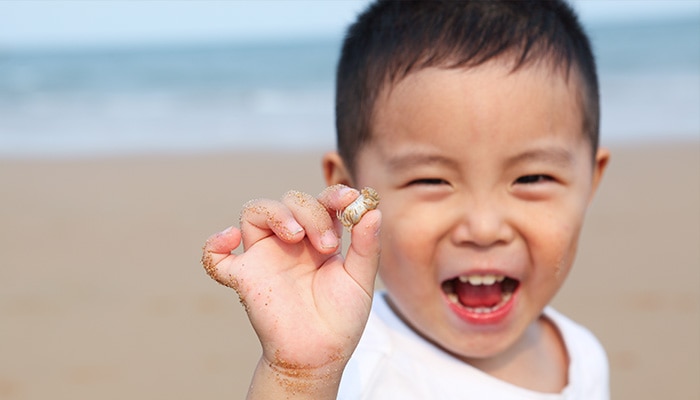While we believe that the books and resources recommended may be of value to you, keep in mind that these are suggestions only and you must do your own due diligence to determine whether the materials are appropriate and suitable for your use. PNC has no sponsorship or endorsement agreement with the authors or publishers of the materials listed.
CURIOUS CRAWLERS

Crustaceans
Children will compare crustaceans to insects and experiment with salt water.

Lesson Objective
Children will compare crustaceans to insects, learn about their dependence on salt water, and experiment with saltwater.
Science
What You'll Need
- Pictures of a variety of insects (ladybugs, crickets, caterpillars, ants, etc.)
- Pictures of a variety of crustaceans (hard-shell crab, horseshoe crab, hermit crab, lobster, crayfish, shrimp)
- Warm water – 2 cups per partnership
- Measuring cups – 1 per table
- Clear plastic cups – 2 per partnership
- Salt – 6 tablespoons per partnership
- Eggs – 2 per partnership
- Plastic spoons – 1 per child
What To Do
Note: Assign each child a partner to work with to perform the experiment. For each partnership, mark one of the cups with an “S” to indicate the cup containing the salt water.
- Display the pictures of the insects and crustaceans. Begin a discussion with the children about how these animals are alike and how they are different (see Did You Know?).
- Continue the conversation with the children, leading up to where these animals live (see Did You Know?).
- Tell the children they will be performing an experiment to see if there is a difference between salt water and fresh water by floating eggs in both salt water and fresh water.
- Distribute the cups, salt, and spoons to the children.
- Measure 1 cup of warm water, and pour into each of two cups per partnership.
- Have partners take turns stirring the salt into the “S” cup of water until it dissolves.
- Demonstrate carefully lowering an egg into the fresh water with the spoon. Repeat by lowering the other egg into the salt water.
- Distribute the eggs, and assist the children as necessary with carefully lowering the eggs into the water.
- Observe the eggs in the cups of water, and discuss (see Guiding Student Inquiry).
Resources
Home School Resources
Home educators: use these printable lesson PDFs to teach this lesson to your home schoolers. They're available in English and Spanish.
Content Provided By
Common Core State Standards Initiative – These lessons are aligned with the Common Core State Standards ("CCSS"). The CCSS provide a consistent, clear understanding of the concepts and skills children are expected to learn and guide teachers to provide their students with opportunities to gain these important skills and foundational knowledge [1]. Visit the CCSS



